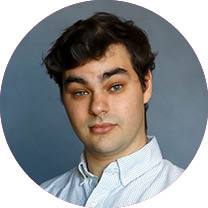On July 1 Reginald DesRoches became Rice University’s eighth president. The former dean of engineering and provost, DesRoches has worked as an administrator at Rice since 2017. Born in Port-au-Prince, Haiti, he grew up in Queens, New York, and earned his doctorate in structural engineering at the University of California Berkeley. Rice enrolls approximately 4,000 undergraduate and 3,500 graduate students. Answers have been edited for length and clarity.
What brought you to Rice University?
I've always had great respect for Rice as an incredible institution. I actually have two former PhD students who are faculty here, one PhD and one postdoc. I used to travel to Houston quite a bit as a faculty member at Georgia Tech for development. I wasn't looking for a job, but a headhunter came and asked me if I was interested; I thought about it and threw my name in the hat.
How did your promotion to university president come about?
It was quite shocking. I had already been in the provost role for a year and a half, and when the president at the time, David Leebron, announced he was stepping down as president, it really didn't come to my mind that I would be somebody that would be considered for the role. But then a number of people approached me, and I went through the process. Once you get on these administrative paths there are many different tracks you can take to the presidency. It's pretty common that you are a dean first; the next natural step is provost. Provost is like a vice president of the university, so the next step after that is president. I knew at the point when I became a provost I would likely be a president. I didn't realize it would be at Rice, nor did I realize it would be that soon after becoming provost, but certainly I knew at some point in my career I would pursue a presidency at a university.
What is the role of the president at Rice University?
It is the chief executive officer of the university. All of the staff and faculty, all the academic mission and nonacademic missions report up through the president. So he or she is the CEO of the university. It’s a fairly substantial role as I'm learning with lots of meetings and lots of different constituents. It's a pretty major step in terms of the change in organization and all that comes with that change.
What vision do you have for your role as president?
So as provost, I was in charge of the entire academic mission of the university. The provost is the chief academic officer. Undergraduate programs, graduate programs, research, all of that sort of falls under the purview of the provost. In that role I'd really had a number of initiatives, growing the research enterprise was one of them. One of the things that I'm focused on is to look at the graduate programs and make sure they are the same distinction as the undergraduate programs at Rice. I think traditionally, Rice is known as a great undergraduate institution, and now that we've had more and more graduate programs we're going to see, in probably the next five years, more graduate students than undergraduate students. So I think certainly one direction is to grow the stature of the graduate programs to be commensurate with the undergraduate reputation of the university; to grow the research that we do at Rice that is impacting the city, the state and the nation; and making sure we continue to diversify the student body and faculty at Rice.
Why is there a focus on growing the graduate programs?
Rice is a major research university, probably one of the few universities that has more undergraduate students than graduate students. A big part of a research university is having graduate students that do the work with your faculty. It really goes hand in hand in terms of growing the research and growing the graduate population. A number of graduate programs have launched just in recent years at the master's and PhD level.





